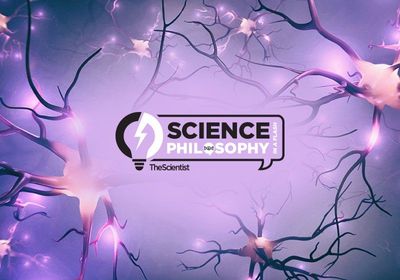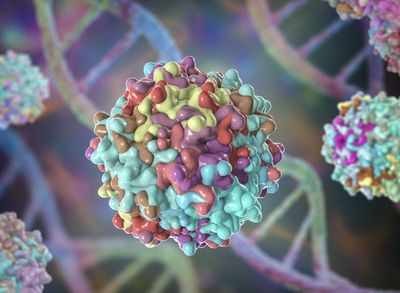
In psychology, the historical debate of nature versus nurture refers to whether hereditary or environmental factors dictate behavior. This oversimplified theory fails to capture how internal genetic factors and external influences intersect and contribute to human nature. For instance, scientists know that common environmental factors can affect gene expression, such as differences in diet, sun exposure, and medication use.1,2 Although researchers today recognize the false dichotomy of nature versus nurture, it remains challenging to untangle the complex interactions between genetic and environmental risk factors tied to neurodevelopmental disorders, including schizophrenia.
Schizophrenia is a complex mental illness that affects how patients think, feel, and behave. However, the detailed pathophysiology of this disorder is largely unknown, which impedes early detection and intervention. “It's a highly heritable disorder…The question is, what is the genetic component,” explained Karolina Aberg, a professor from Virginia Commonwealth University. “We look at DNA methylation, which is a molecule that makes changes to the DNA strand without making changes to the sequence itself.” Methylation contributes to genetic complexity by modulating how genes are expressed and mediating external factors that affect gene expression.3 Researchers who study schizophrenia, including Aberg, believe epigenetic factors such as methylation may hold the key to understanding the genetic and environmental connections at the core of this disorder.4,5
We are learning about etiology and susceptibility in a way that we couldn't if we didn't have these pre-existing samples.
- Karolina Aberg, Virginia Commonwealth University
In their latest work published in Molecular Psychiatry, Aberg’s team performed a methylome-wide association study, capturing pre-disease onset methylation data and pairing it with post-disease onset gene transcription data.5 With this approach, they identified epigenetic differences that are detectable before schizophrenia symptoms, and indirectly linked these differences with genes that are functionally relevant to schizophrenia development.
Aberg and her colleague Edwin Van den Oord retrospectively examined blood samples collected from people who developed schizophrenia later in life and healthy controls. “One of the most unique parts of this study is that they used neonatal blood samples,” said Atsushi Takata, a team leader at the RIKEN Center for Brain Science, who was not involved in the study. This unique design enabled Aberg and Van den Oord to noninvasively identify schizophrenia-specific methylation differences that reflect susceptibility prior to disease presentation. This study design also eliminated potential confounding factors that alter methylation during a patient’s lifetime. “We know that the methylation changes we see affect the disease, and not the other way around,” Van den Oord explained. This is important to consider, as environmental factors that patients experience, including therapeutics used to treat schizophrenia, can alter gene methylation and interfere with the search for disease-specific biomarkers.4
The researchers connected the significant methylome alterations that they observed with gene expression changes in postmortem brain samples from individuals with or without schizophrenia. Because it is rarely possible for scientists to examine the molecular makeup of brain tissue before a patient passes away, it is difficult to directly identify true genetic drivers that exist before disease onset, independent of lifestyle factors and therapeutics. “I think this is a reasonable approach to obtain supportive evidence,” Takata said. “To get conclusive results on robust, clinically useful biomarkers, further studies are required.”
Although the researchers’ findings move clinical psychology research forward on the road to early diagnosis, there is more work ahead. In the quest to uncover more about the genetic and environmental drivers of schizophrenia, neonatal methylome analysis may provide the tools to dig deeper. “This is just scratching the surface,” Aberg said. “We are learning about etiology and susceptibility in a way that we couldn't if we didn't have these pre-existing samples.”
References
- Hunter DJ. Gene-environment interactions in human diseases. Nat Rev Genet. 2005;6(4):287-98. doi:10.1038/nrg1578
- Ralston A, Shaw K. Environment controls gene expression: Sex determination and the onset of genetic disorders. Scitable by Nat Edu. 2008;1(1):203. Accessed May 26, 2023. https://www.nature.com/scitable/topicpage/environment-controls-gene-expression-sex-determination-and-982/
- Villicaña S, Bell JT. Genetic impacts on DNA methylation: research findings and future perspectives. Genome Biol. 2021;22(1):127. doi:10.1186/s13059-021-02347-6
- Magwai T, Shangase KB, Oginga FO, Chiliza B, Mpofana T, Xulu KR. DNA Methylation and Schizophrenia: Current Literature and Future Perspective. Cells. 2021;10(11):2890. doi:10.3390/cells10112890
- van den Oord EJCG, Xie LY, Zhao M, et al. Genes implicated by a methylome-wide schizophrenia study in neonatal blood show differential expression in adult brain samples. Mol Psychiatry. [published online: April 27, 2023]. doi:10.1038/s41380-023-02080-5




